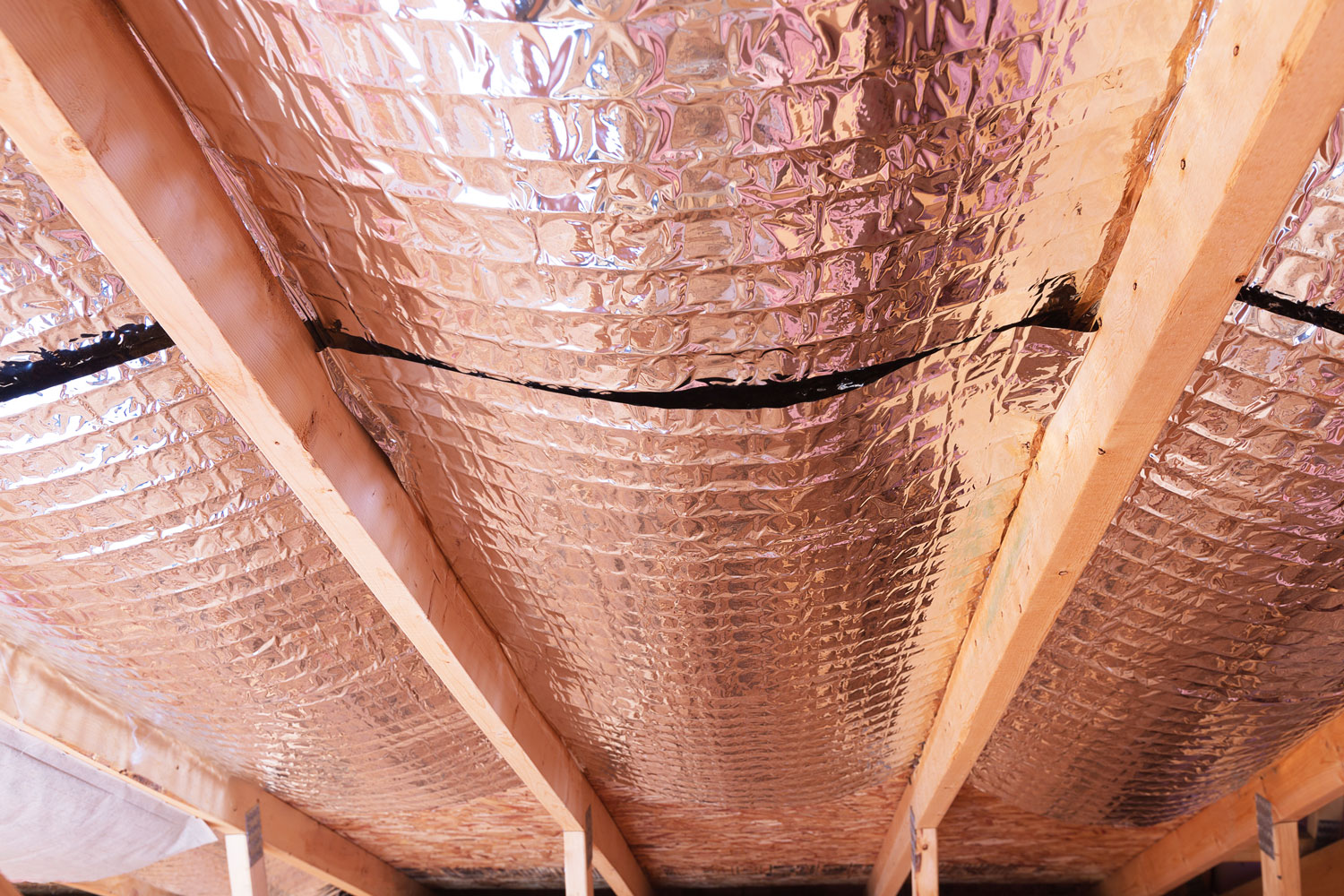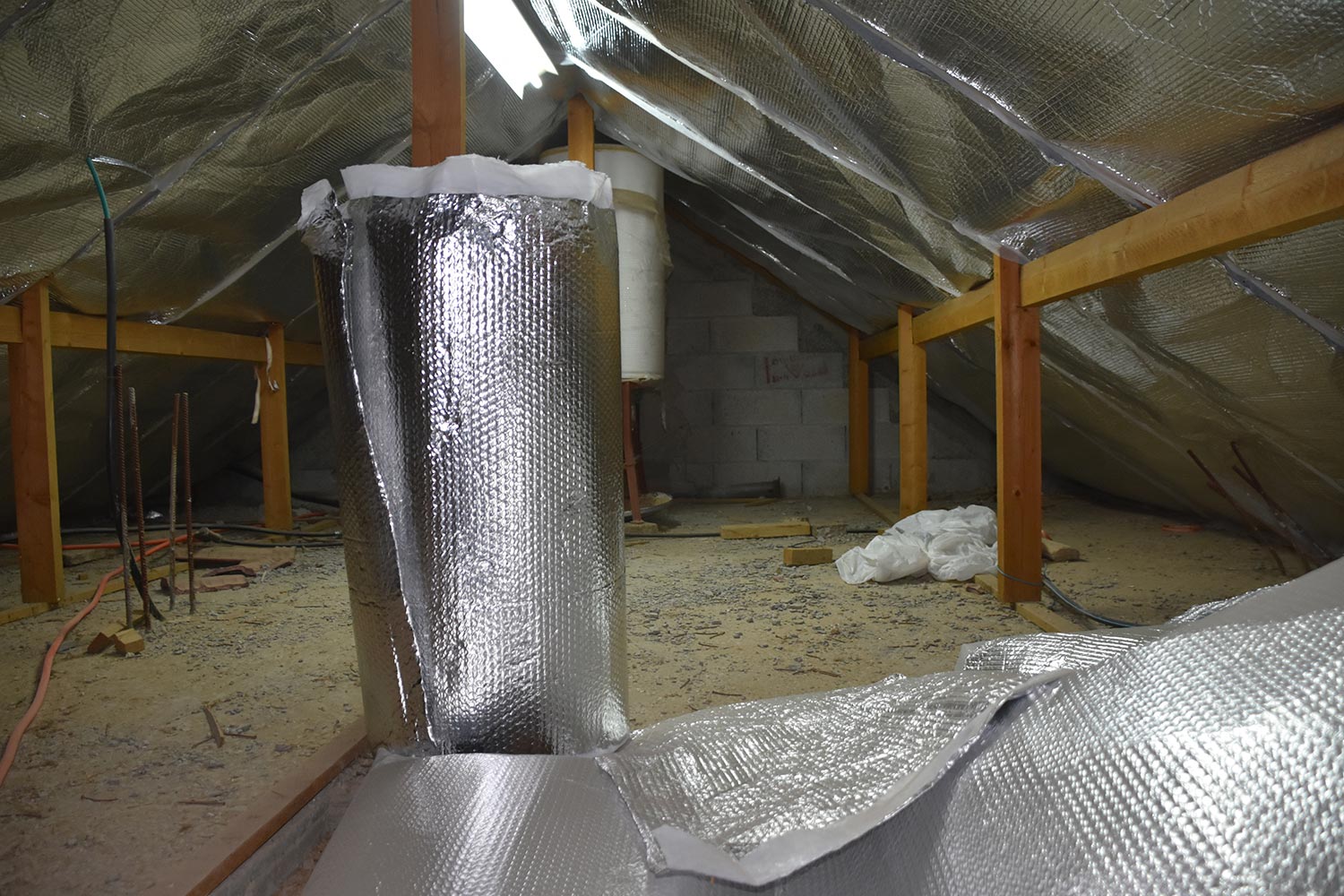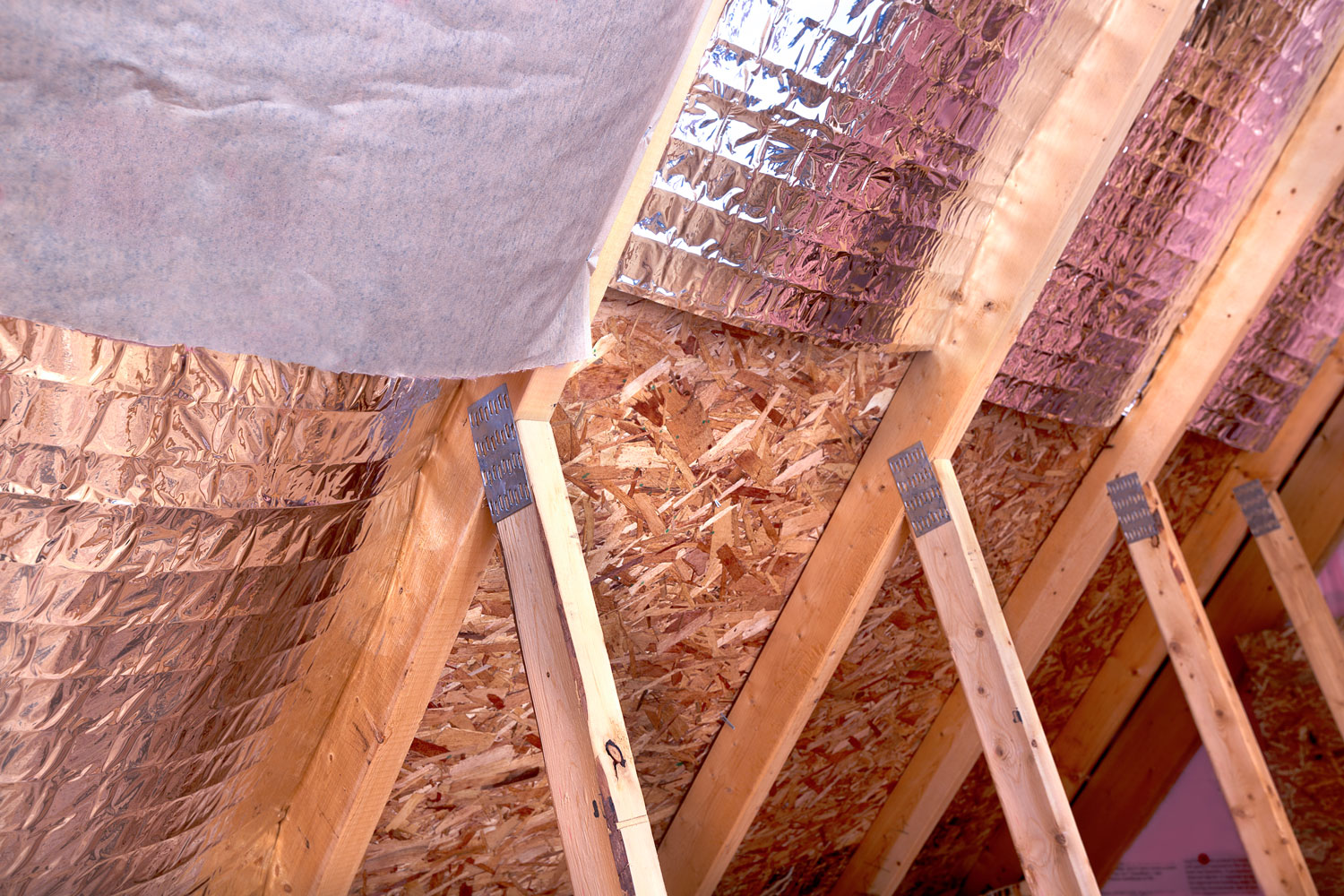Radiant barriers are popularly advertised additions to attics, especially in hot southern climates. So, you are wondering whether or not adding a radiant barrier is worth it. We combine industry professional knowledge and up-to-date research to answer your question thoroughly in this post.
Generally, the pros and cons of adding a radiant barrier are as follows. Weigh these pros and cons for your specific home to decide if installing a radiant barrier is right for you.
- Pros
- Reduce Attic Temperature
- Lower Cooling Bills
- Cons
- Installation Cost
- Installation Process
- Upkeep
- Dust
- Return-on-Investment
Keep reading the rest of this post for details on each of the above bullets. Following this, we briefly discuss whether installing a radiant barrier is truly worth it. Finally, we answer a few questions related to the topic of this post.

Pros
The pros of installing a radiant barrier stem from the fact that radiant barriers reflect radiant heat. As designed, radiant barriers take the heat that radiates off the bottom of your roof assembly and reflects that heat back up out of your home.
Reduce Attic Temperature
Radiant barriers reflect heat out of the attic; this means that a radiant barrier equates to a lower attic temperature. This lower temperature is especially useful in the summers.

That is to say; a lower attic temperature means that any ducts in your attic will also have a lower temperature which makes it easier for them to bring cool conditioned air throughout your home. Also, a reduced temperature in your attic will mean that your attic insulation has less work to do.
Finally, if you use your attic for storage, a lower temperature will help keep those items in a newer condition.
Lower Cooling Bills

A radiant barrier also reduces the overall cost of cooling your home. According to the US Department of Energy, radiant barriers save 5% to 10% on cooling costs on average. Take note these savings are most pronounced in warm and sunny climates.
Some sources claim that radiant barriers may save up to 17% on your cooling bills. This number may be possible but only under the perfect conditions in terms of climate, home location, and radiant barrier condition.
Cons
In the following subsections, we consider the primary cons to installing radiant barriers. Many of these stem from installation considerations. However, the most important con is the dubious return on investment of installing a radiant barrier.
Installation Cost
Installing a radiant barrier costs between $500 and $3000. The main factors influencing this price are whether you install a single or double-sided radiant barrier and whether or not you perform the work yourself.
Click here for some radiant barrier from Amazon.
To determine the exact price for installing a radiant barrier in your home, you will have to price out local materials or ask a local company for an installation quote.
Installation Process
Installing a radiant barrier is a relatively easy and straightforward job of the many possible weatherizations remodels. However, it is not without its drawbacks.

The drawbacks include the need to enter a hot, dangerous, and cramped attic for hours at a time while doing manual labor. This is not only a lot of work but also runs the risk of damaging your ceilings ducts or disturbing your insulation. Unfortunately, disturbed insulation may have a lower overall R-value.
Upkeep
The next con of radiant barrier installation is the need for relatively routine upkeep. Generally, radiant barriers are stapled to roof framing. Over time, the barrier inevitably falls down in places and must be restapled to be effective.
Dust
Unfortunately, almost all attics are dusty places. This is usually not an issue as the dust is out of sight and therefore out of mind.
However, if dust falls onto the radiant barrier, the barrier's ability to reflect heat can be significantly reduced. This means that the original 10% reduction in cooling will begin to fall over time.
For some radiant barrier installs, it is possible to brush, blow, or dust off anything that falls onto the barrier. However, for those barriers installed on the attic ceiling, there is no access to the dusty side of the radiant barrier.
To partially mitigate this problem, be sure that you install the reflective side of the single-sided radiant barrier down or use a double-sided radiant barrier.
Return on Investment (ROI)
For the sake of this section, we are going to make some assumptions on the economics involved with radiant barriers. To truly come to your own return on investment timeline, you will have to make calculations based on your specific home and energy costs.

First, let us assume that a radiant barrier for your home costs on the low end of the possible range at $1,500 installed. Then, let's assume that you have a very high cooling price at $70 a month for eight months a year.
Now, if you save 10% of your cooling cost with a radiant barrier, you will save $7 per month. Multiply that times eight months to get $56 in savings a year. Divide the initial cost of $1500 by $56 to get a 26.8-year payback timeline.
Assuming that your radiant barrier will last almost 27 years and that it will reduce your cooling cost by 10% every month during that time are both relatively big assumptions.
A Caveat on ROI
Note that the numbers explored here may change significantly if you install the barrier yourself or have very high cooling costs. However, the exercise above demonstrates that radiant barriers usually will not save you money over their lifetime or the number of years you will own your home.
Should You Install Radiant Barrier In The Attic?
Now that you understand the many pros and cons of installing a radiant barrier in the attic, it is likely that you will choose not to make this install because of a poor return on investment.
However, your specific situation may lead to a radiant barrier that will pay itself off in a reasonable time. 20 years or less is often considered a reasonable payoff timeline for weatherization additions.
In short, it is essential to calculate an ROI for your specific home, radiant barrier installation cost, and cooling cost to decide whether installing a radiant barrier is worth it for you.
Which is better radiant barrier or insulation?
If you had to only install a radiant barrier OR insulation, insulation is always the better call. Insulation does a very good job of protecting your home from the hot and cold outside air. This insulation reduces both cooling and heating costs and usually has a shorter ROI.
What is the R-value of a radiant barrier?
Most radiant barriers have an R-value of R-0. This is because radiant barriers stop the movement of radiant heat. On the other hand, R-values are a measure of how well a material prevents conductive heat transfer.
Some radiant barriers, like foil-faced insulation or aluminum foil bubble wrap, are both radiant barriers and insulation. These do have a wide range of R-values.
How do you install a radiant barrier in the attic ceiling?

Installing a radiant barrier is a relatively easy process well within the capabilities of most DIYers. For this job, follow these general directions.
1. Gather Materials
First, you will want to measure your attic ceiling for square footage and buy staples and a radiant barrier to cover that space completely. When measuring, also ensure that you have access to your whole attic.
Click here for single-sided radiant barrier from Amazon.
Generally, single-sided radiant barriers are cheaper, while double-sided radiant barriers reflect more heat over time so that they will work better.
2. Staple Up Radiant Barrier
Now, use those staples to staple the radiant barrier to the underside of your roof rafters. Importantly, there needs to be empty air space between the actual roof sheeting and the radiant barrier itself. Without the space, the radiant barrier will not be reflective and will conduct heat like the rest of your roof.
Click here for staple gun staples from Amazon.
As mentioned above, if you use a single-sided radiant barrier, be sure to face the reflective side down. If the reflective side is up, it will get dusty, which reduces the radiant barrier's effectiveness. Staple the barrier up across the entire attic space or at least in all the places you can reach.
3. Refluff Disturbed Insulation
While performing this project, be sure not to damage your ceilings. Further, it is hard not to disturb your ceiling insulation while installing the radiant barrier.
No worries, as long as you redistribute and re-fluff any insulation you disturb, the radiant barrier install will not cause a significant decrease in the R-value of your ceiling insulation.
Does radiant barrier block cell phone signal?
Any metallic material will block and interfere with a cell phone signal. However, the small amount of surface that the radiant barrier takes up and its very thin nature means that a radiant barrier should have almost no noticeable effect on the cell phone signal in your home.
For example, your car is encased in metal much thicker and more continuous than a radiant barrier. Despite this, you will still usually have very good cell reception in your automobile.
Additional Reading
To learn more about radiant barriers and attic insulation, read these great HVAC Seer articles:
- Does A Radiant Barrier Block Reception? [TV, Cell, And Wifi]
- What Is The Best Attic Insulation For Texas?
- Attic Insulation: Which Way Should It Face?
In Closing
This post provides the pros and cons of installing a radiant barrier. Then, we help make a call as to whether or not this project is worth your while. To conclude, we provide a brief guide on installing radiant barriers and the answers to a few related questions. Good luck!



